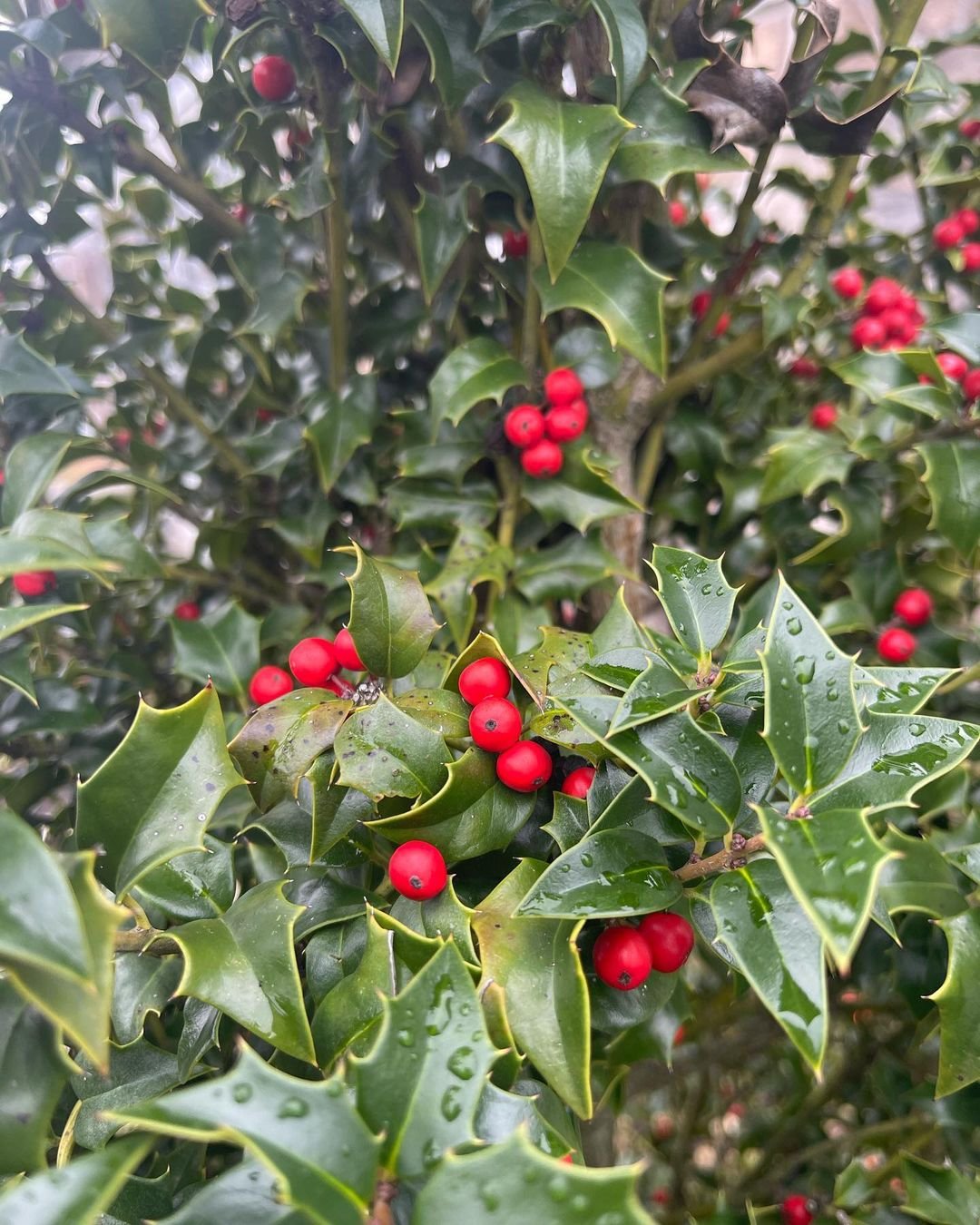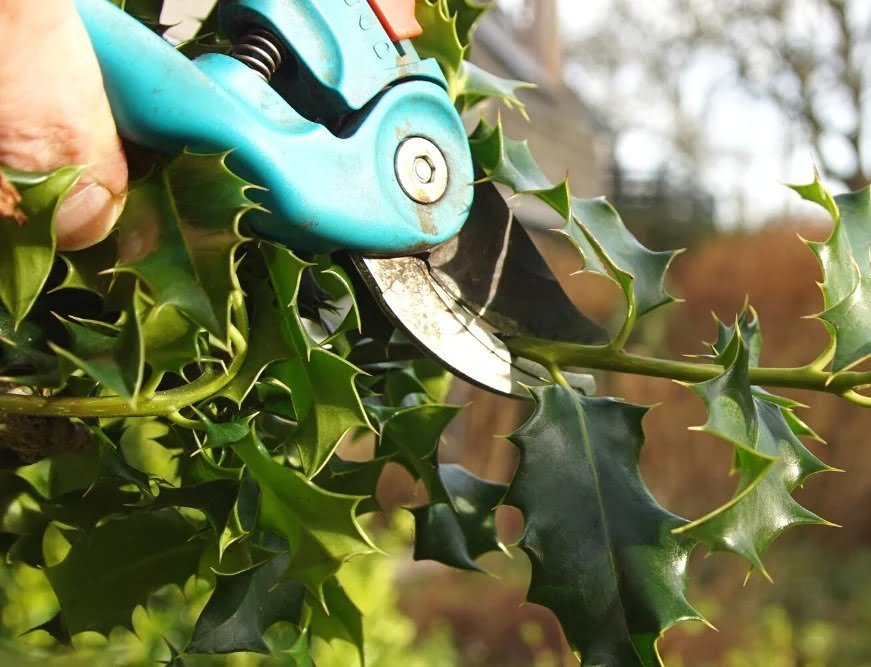When it concerns evergreen bushes that stand out in the yard, Blue Princess holly (Ilex × meserveae ‘Blue Princess’) is a top contender. This women cultivar of The blue holly is not just a stunning addition to your landscape; it’s additionally understood for its bright red berries, which make it a popular selection for winter holiday designs. In this comprehensive overview, we will look into the globe of Blue Princess holly, covering whatever from its features to care ideas, making sure that you have all the info you require to grow a thriving and visually stunning garden.
Blue Princess Holly: A Closer Look

Here’s a short information chart for the Blue Princess Holly (Ilex × meserveae ‘Blue Princess’):
| Category | Details |
|---|---|
| Common Name | Blue Princess Holly |
| Scientific Name | Ilex × meserveae ‘Blue Princess’ |
| Family | Aquifoliaceae |
| Origin | North America (hybrid cultivar) |
| Plant Type | Evergreen shrub |
| Height | 8-12 feet (2.4-3.7 meters) |
| Width | 6-8 feet (1.8-2.4 meters) |
| Light | Full sun to partial shade |
| Watering | Moderate; prefers evenly moist, well-drained soil |
| Soil | Well-draining, slightly acidic soil |
| Temperature | Prefers cool to temperate climates; hardy to USDA zones 5-9 |
| Humidity | Moderate |
| Propagation | Cuttings |
| Flower Color | Small, white |
| Bloom Time | Spring |
| Special Features | Glossy, dark green leaves with spiny edges; produces bright red berries (requires a male pollinator like ‘Blue Prince’ for berry production) |
Understanding Blue Princess Holly
Blue Princess holly belongs to the Ilex x meserveae shrubs, and it’s important to recognize that these plants are dioecious. This suggests individual shrubs are either male or women, however not both. The women Blue Princess needs a male pollinator to produce its trademark holly berries. In this case, ‘Blue Prince’ is the male counterpart that enhances Blue Princess. To make sure a plentiful berry harvest, it’s advised to contend the very least one male hedge for each three to 5 female shrubs. Read more about Princess Holly.
Treatment and Maintenance

Blue Princess is a fairly low-maintenance plant, but there are some crucial aspects to bear in mind:
Light
Blue Princess holly can prosper completely sunlight to partial color. In areas with warmer temperature levels, giving some security from extreme afternoon sun is recommended.
Soil
Well-drained dirt is essential for these shrubs. They can endure a variety of soil types but choose somewhat acidic to neutral soil with a pH varying from 5.0 to 7.0.
Water
Throughout the initial expanding period, it’s important to deeply water the shrub consistently to develop a durable root system. Weekly waterings are generally adequate, yet readjust as needed based on weather conditions.
Temperature and Humidity
Blue Princess holly can endure temperature levels as reduced as -20 to -10 degrees Fahrenheit. Protecting the bush from rough winter months winds and guaranteeing modest humidity levels are excellent.
Fertilizer
Minimal fertilizer is needed for Blue Princess holly. Utilizing a natural holly-specific fertilizer is recommended, and including compost right into the dirt during planting can be helpful.
Varieties of Blue Holly
The “blue” in blue holly comes from the blue tint of its dark eco-friendly leaves. In addition to ‘Blue Princess’ and ‘Blue Royal prince’, there are numerous other female and male blue holly varieties, including:
- ‘Blue Girl’ (Ilex x meserveae ‘Blue Girl’)
- Hardy in zones 5 to 9
- Grows 6 to 8 feet high and generates brilliant red berries.
- ‘Blue Boy’ (Ilex x meserveae ‘Blue Boy’)
- The male counterpart to ‘Blue Girl’.
- Dark vegetation perfect for dense bushes.
- ‘Blue Maid’ (Ilex x meserveae ‘Blue Maid’)
- Fast-growing, getting to 8 to 10 feet high with a 6- to 8-foot spread.
- Generates red berries and is hardy in zones 5 to 9.
- ‘Blue Stallion’ (Ilex x meserveae ‘Blue Stallion’)
- Fast-growing male pollinator, sturdy in areas 5 to 9.
- Expands to around 10 to 12 feet tall, with shiny dark blue foliage.
- ‘Hachfee’ (Ilex x meserveae ‘Hachfee’)
- A Female plant likewise referred to as ‘Castle Apex,’ growing 8 to 10 feet high and 4 feet wide.
- ‘Heckenstar’ (Ilex x meserveae ‘Heckenstar’)
- The man plant for ‘Hachfee,’ likewise referred to as ‘Castle Wall surface’.
- Grows 8 to 10 feet high and 4 feet broad as a dense hedge.
Pruning Tips

While Blue Princess holly can potentially get to 15 feet in elevation, it’s quickly maintained at a more manageable size with minimal pruning. The very best time to prune depends on your visual choices. Some gardeners favor to trim in early winter months, utilizing cut stems with holly berries for decorations. Others prune later in the wintertime to preserve exterior screens of holly berries on the bushes. To achieve an extra all-natural and much less noticeable look after trimming, surprise the depth of your cuts. Keep in mind that hollies blossom on old timber from the previous expanding season, so the timing of your trimming can affect the production of blossoms and berries in the list below year.
Proliferation and Growing from Seed
Holly hedges, consisting of Blue Princess can be circulated reliably from cuttings taken in late springtime or very early summertime. Right here’s a simple overview for effective proliferation:.
- Take a 6- to 8-inch softwood reducing concerning 1/4 inch below a leaf node, utilizing sharp pruners.
- Dip the cut end in rooting hormonal agent.
- Installed the cutting in a small pot loaded with a combination of potting tool and sand.
- Maintain the expanding medium wet until a root system creates, which can take several weeks.
- When roots have created, transfer the brand-new plant right into a larger pot or plant it in the garden.
Growing Blue Princess holly from seed is not recommended, as it is a taxing procedure, taking greater than a year for seeds to sprout and grow. This method is hardly ever utilized outside of business manufacturing.
Overwintering
In regions susceptible to harsh winter season conditions, holly shrubs, consisting of ‘Blue Princess,’ can be based on desiccation. Shielding these at risk shrubs is important. Choices consist of splashing the shrubs with an anti-desiccant in late loss or covering them in burlap to protect them from severe wintertime winds. If you’re growing Blue Princess holly in USDA hardiness zones 4 and 5, take into consideration carrying out some kind of winter season defense.
Common Pests and Plant Diseases

Holly shrubs can sometimes face issues with typical insects and conditions. A few of the crucial issues to be aware of include:.
Common Insect Problems
- Holly fallen leave miners.
- Spider termites.
- Whiteflies.
- Scale.
Disease Issues
- Powdery mildew.
- Leaf spot.
- Tar spot.
If you encounter these troubles, timely action is needed. Treat fallen leave miners with a foliar chemical, control spider mites with insecticidal soap, and address range invasions by spraying with horticultural oil. Fungal illness like grainy mildew, fallen leave spot, and tar spot can be taken care of with spray fungicides. Additionally, making certain appropriate air circulation and sunshine, together with staying clear of above spraying, can aid protect against these illness.
Encouraging Berry Production
With Blue Princess holly, the goal is to encourage the development of fed blossoms that lead to attractive red berries. If your bushes are not generating berries, there are 2 usual reasons to take into consideration:
- Absence of Pollination: Make certain that a male ‘Blue Prince’ holly neighbors to pollinate your ‘Blue Princess’ hedges. For a great berry return, it’s recommended to have one male hedge for every 4 or five women shrubs.
- Aggressive Pruning: Trimming holly shrubs during the winter season can eliminate recognized growth that would generate flowers and berries the list below year. Readjust your trimming practices by lowering the extent of reducing or omitting it totally for a year to urge berry manufacturing.
Common Problems and Solutions
Holly bushes are typically hassle-free, however if problems emerge, they typically fall under the complying with classifications:
Yellowing Leaves: If you discover yellowing fallen leaves, it may be due to chlorosis, caused by alkaline dirt. Utilize an acid fertilizer to neutralize this concern in alkaline soil, and compost with pine needles to help acidify the dirt.
Fallen leave Drop: A holly that starts dropping leaves might be enduring from a leaf spot fungi. While it might be far too late to deal with the fungi once the fallen leaves are dropping, the plant generally recuperates. Stop future incidents by consistently treating the hedge with a fungicide.
Burned Leaves: Browning and dead branches are normally an outcome of winter months injury. Eliminate the dead leaves and trim the branches to eco-friendly wood. To avoid future damages, protect the shrub with the winter months with a burlap wind block or by utilizing anti-desiccant sprays.
Frequently Asked Questions
How much time does a Blue Princess holly hedge live?
With appropriate care and expanding conditions, many holly shrubs can live for 100 years or more. ‘Blue Princess’ and ‘Blue Royal prince’ cultivars were created in 1973, and several of the preliminary hedges are still thriving.
How was blue holly created?
Blue holly, consisting of ‘Blue Princess,’ was developed via the hybridization of Ilex aquifolium and I. rugosa. This hybridization caused a line of cold-hardy blue hollies, with the botanical name Ilex x meserveae in acknowledgment of the contributions of Katherine Meserve, that played a considerable function in their advancement.
How do I separate in between a man and women holly bush?
If your bush generates red berries, it’s a female. Nonetheless, a bush not producing berries might still be a women not cross-pollinated by a male plant. To distinguish in between them, analyze the blossoms very closely. Male flowers have extending endurances, while female flowers have an eco-friendly or red bump (the ovary) in the center.
Finally, Blue Princess holly is a captivating addition to any type of garden, supplying not only aesthetic allure with its shiny, dark green fallen leaves and brilliant red berries but also a touch of holiday magic. With the ideal care and focus, this hedge can prosper in your yard for many years to find. Whether you’re an experienced gardener or just beginning your trip, Blue Princess holly is a resistant and gorgeous selection that will make your landscape beam year-round.
Pingback: Pink Pineapple: A Sweet and Surprising Delight!
Pingback: Grape Varieties: A Comprehensive Guide - Gardener's School
Pingback: Comprehensive Guide to Weeping Willows Care and Cultivation